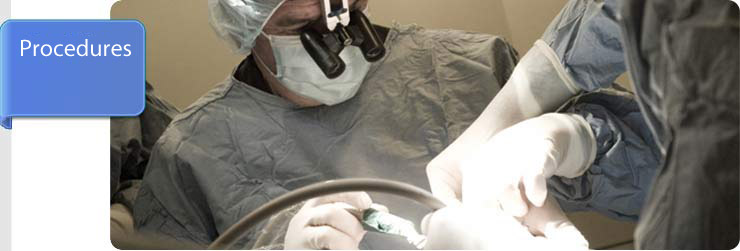
Implant Dentistry
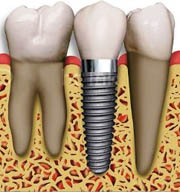
Implantology is a discipline based on the replacement of missing teeth with implants; small cylindrical elements made of titanium become the artificial substitute of the missing tooth root. This is carried out trough a minor surgical procedure which involves placing a titanium root into the mandibular or maxillary bone. This is then used as a basis for the placement of all types of prostheses, from single tooth replacements to full dentures or bridges. The replacement of missing teeth is essential in order to prevent the bone tissue from reabsorbing, which could result in a loss of functionality and esthetic degradation which in turn would be detrimental to the patient’s self-confidence.
Leer más >>
Once surgery is completed, a provisional bridge is placed for a period of 4 to 6 months, allowing the implants to fix firmly to the bone. Once the implants are anchored we are able to finalize the restoration by placing the definitive prostheses. Implants improve the patient’s ability to masticate, appearance, phonetics, comfort and self esteem.
At present, implant crowns and bridges, should feel like the teeth themselves. Implantology is an indispensable part of modern dentistry, which is no longer to be considered as experimental. It has revolutionized dentistry and today its reliability is widely acknowledged. Clinical studies have found that the success rate of dental implants without previous significant bone loss is over 98%. In the hands of adequately trained professionals implants are very safe, predictable and most of the time a far superior alternative to bridges and classic dentures. In most cases implants will be of permanent functionality throughout the lifetime of the patient. Currently in some cases, the usual protocol may be varied and the prosthesis may be placed on the same day of surgery. There are also situations where the availability of bone makes it convenient to plan the case through a sophisticated computer program that allows us to perform surgery without having to "open the gum", this technique has been termed "non-surgical implant insertion". Branemark Osseointegration Centers are at the forefront of this cutting-edge technology. By means of the same technique, we also specialize in solving those cases where the patient has very little bone. In such situations it is necessary to perform grafts or regenerative bone techniques.
Aesthetic Dentistry

Within the scope of aesthetic dentistry we offer a wide range of treatments designed to enhance appearance. Prosthodontists, the only dentists recognized as true specialists in aesthetic dentistry, can restore optimum function and appearance to your teeth – and to your smile. All other dentists are aesthetic specialists in name only, since there is almost no standardization in their training, the scope of their knowledge, their skill levels and their experience, the results of their treatment will vary greatly.
Leer más >>
In choosing a dentist for your cosmetic dentistry, you should familiarize yourself with their relevant training and experience. Visit the doctor’s Web site and don’t hesitate to call their office and ask questions; the more you know about their credentials, the more likely you are to make an informed decision that will leave you with a smile.
Ask to look at the dentist’s sample photographs showing examples of his or her work to see if the size, shape and color of the restorations look attractive to you. However, an all-important factor in determining whether or not the restorations have been completed properly is the appearance of the gums around the teeth. Discolored and puffy gums will not only detract from the appearance of the final restorations, they are a sign of inflammation, and they can lead to serious problems including bone loss and tooth decay. It is also worth mentioning that recent research has shown an association between gum inflammation and cardiovascular disease, rheumatoid arthritis and pre-term births.
Many dentists’ photo galleries have pictures of patients smiling, but don’t show the gums around the teeth. You need to view photos of restorations with the gums visible and you should ask to see them.
Oral Surgery
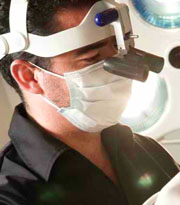
Oral surgery is a specialty dedicated to diagnosing and treating diseases, injuries and defects of the teeth, the jaw and the adjacent soft tissues. Brånemark Osseointegration Centers responds to all types of oral diseases through a wide range of treatments in which the experience of the surgeons merges with our technology to provide the most adequate solutions.
Leer más >>
DENTAL EXTRACTION
The extraction of wisdom teeth is the most common intervention in oral surgery. Among the various reasons for the removal of wisdom teeth are the following; lack of space in the jaw for proper eruption, abnormal orientation (which can damage neighboring teeth or cause dental crowding) and chronic inflammation in the gums.
ADVANCED EXTRACTIONS
Sometimes removing a tooth may be more complicated than usual, either because it is damaged or because the patient has systemic problems. In these cases, the oral surgeon must use his surgical skills to solve the problem.
PROSTHETIC SURGERY
These are interventions that are performed prior to the placement of the prosthesis. They consist of conditioning the gums, jawbone or mandible to facilitate proper alignment of the same.
REMOVAL OF CYSTS AND BENIGN TUMORS
Cysts located within the jawbone or mandible are fairly common. They have a diverse etiology although they are usually the product of latent infections in damaged teeth, confined teeth inside the bone or faulty embryonic structures. In all three cases surgery is necessary in order to eliminate issues that could pose further complications in the future. Within the oral cavity, benign tumors such as lipomas, fibromas or small angiomas can develop. The treatment of these tumors is to perform an excision of the lesion, and a subsequent biopsy by a pathologist to determine the extent of the injury.
PERIAPICAL SURGERY APICOECTOMY
Occasionally, after performing endodontic treatment of a tooth root, infection persists and it is necessary to perform a minor surgical procedure to clean the root of the tooth affected and thus solve the problem.
CHILD SURGERY
When children experience speech pathologies or teeth misalignment motivated by the buccal or lingual braces, a minor intervention is required. These surgeries are very short and are carried out with local anesthesia and solve problems that could become of greater importance later during adulthood.
Endodontics
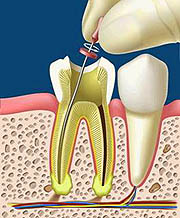
Endodontics deals with the tooth pulp and the tissues surrounding the root of a tooth. The inflammation or infection of the latter can result in a high sensitivity of the tooth, mostly whilst masticating or digesting cold substances.
Leer más >>
Our endodontists perform a variety of procedures including root canal therapy, endodontic retreatment, surgery, treating cracked teeth, and treating dental trauma. Root canal therapy is one of the most common procedures. If the pulp (containing nerves, arterioles, venules, lymphatic tissue, and fibrous tissue) becomes diseased or injured, endodontic treatment is required to devitalise and thus save the tooth. In some cases it is convenient to place a crown on the sterilized tooth to prevent it from fracturing. Local anesthesia is necessary to clean the pulp. Once clean the duct is filled with biocompatible sealants. Most of these procedures are carried out in a single session lasting around 45 minutes per tooth.
Periodontics
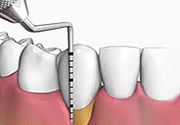
This medical-surgical specialty focuses on the prevention, diagnosis and treatment of periodontal diseases such as periodontitis (destruction of the bone supporting the tooth) or gingivitis (inflammation and bleeding of the gums without affecting the bone). To cure these diseases or to prevent relapse, Brånemark offers periodontal treatment led by a specialist in periodontics and a team of hygienists.
Leer más >>
The bacteria that cause periodontal disease are always present in the mouth and are constantly attacking the gums. It is therefore crucial that the periodontist detects potential areas of relapse and removes both plaque and calcified deposits (tartar). It is also the periodontist’s role to examine the tissues in the mouth and and the levels of insertion of the gum, detect and treat the weak areas, control and adjust the occlusion and assess the effectiveness of the patient's dental hygiene. Periodontal disease is chronic, so you need regular monitoring and ongoing periodontal treatment. So-called "dental-cleanings" that are carried occasionally are not sufficient to halt the spread of this problem. Therefore at Brånemark, in addition to cleaning (periodontal prophylaxis), we conduct periodic reviews to detect cavities and other complications. In this sense, the periodontist and dentist are two key professionals to keep your gums healthy.
Periodontal treatment at Brånemark is developed in various phases:
- In the first phase, called the Systemic phase, we review and assess your overall health history, during the first visit, to determine if there are any existing medical conditions that could have an impact on your treatment
- The inflammation reduction phase includes oral hygiene instructions and treatments performed in the clinic in order to reduce or eliminate inflammation of the soft tissues.
- The surgical or corrective phase includes various types of surgery that can be performed on the gums and underlying bone in order to completely remove the residual inflammation following the hygienic phase and improve the quantity and quality of the soft tissue around teeth or gums, implants or edentulous areas that have received prosthetic treatment (Mucogingival surgery).
- The final phase or maintenance is essential for the goals achieved to be maintained over time, since it is mainly a disease caused by the accumulation of bacterial deposits under the gums and the patient is unable to remove these. This is why the periodontal team at Brånemark perform this as frequently as each patient requires. Generally, 2 or 3 times each year. This frequency may be greater in patients with braces, diabetics and smokers.
- La fase final o de mantenimiento es esencial para que los objetivos logrados se mantengan a lo largo del tiempo, puesto que es una enfermedad producida principalmente por el acúmulo de depósitos bacterianos bajo las encías y que el paciente no es capaz de eliminar, es por ello que el equipo del servicio de periodoncia de Brånemark lo realizará con la frecuencia que cada paciente requiera. Generalmente, 2 o 3 veces cada año. Esta frecuencia puede ser mayor en pacientes portadores de ortodoncia, diabéticos y/o fumadores.
The duration of the treatment varies depending on the patient's condition. A hygienic phase and evaluation is done in 6 weeks. If the patient requires surgical periodontal treatment it will depend on the number of surgical interventions required. For treatment to be effective it is very important that the patient’s involvement should change their habits of oral hygiene and take action regarding activities of periodontal health risk (i.e. Smoking).
PERIODONTAL DISEASE AND DIABETES
At Brånemark we offer special monitoring to patients with diabetes because of their predisposition to infections of various kinds. Several scientific studies suggest that if these oral diseases are not controlled they can aggravate the development of diabetes. In this regard, research has also shown that diabetics are 4.2 times more likely to develop gingivitis or pyorrhea. Given that any infection alters the sugar levels of a diabetic patient, the obvious conclusion is that it is crucial to monitor closely the health conditions of such patients. Good periodontal health, therefore favors the stability of diabetes and can help reduce insulin requirements. That is why at Brånemark we keep close track of the gums and teeth of our diabetic patients. Good oral health will certainly help avoid certain complications inherent to this disease.
RISK BEHAVIORS: SMOKING
The consumption of tobacco has two main effects in relation to periodontal disease. On the one hand, it increases predisposition, and secondly, it decreases the effectiveness of treatment. Thus smokers have a clear tendency to have more problems with their gums because they receive less blood supply and oxygen to those areas, resulting in a detriment to their defense mechanisms against bacterial plaque. All this is triggered by toxic chemicals produced in the combustion of tobacco. The inevitable consequence is the gradual degradation of the entire system. It is worth realizing that non-bleeding gums are not an indication of their good health as it is precisely because of tobacco that gums will bleed less.
Orthodontics
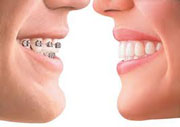
Correcting crooked and rotated teeth is no longer just for kids, in fact the fastest growing segment of orthodontics today is adults. Straightening and aligning teeth can have a major impact on both the health of the teeth and gums and will markedly improve the aesthetics of your smile. Untold numbers of adults admit to being so self-conscious about their crooked teeth that they rarely allow themselves to smile fully in public or in photographs. Having orthodontic treatment as an adult can truly be a life-altering experience; improving one's self esteem and giving the confidence to smile freely.
Leer más >>
Orthodontic treatment in adults requires an in-depth knowledge of not only orthodontic therapy but of the ramifications of treatment on the periodontal health of the patient. Orthodontics has undergone revolutionary changes over the past decade. Many new techniques are now available that allow orthodontic treatment to be a comfortable and painless experience. These new alternatives include: Transparent aligners (Invisalign™), tooth colored braces, micro-braces, and space-age flexible wires. Orthodontics has become an integral part of overall treatment for many of our patients -- especially in more demanding aesthetic cases. In conjunction with our entire team of specialists, we are able to provide whatever treatment is necessary in order to meet the patient’s needs.
ORTHODONTICS FOR CHILDREN
At each of our clinics we have a specialist in orthodontics for children. The correct alignment of teeth is far more than just aesthetics. Having the right occlusion prevents the temporomandibular joint from degrading, as well as the teeth themselves. It is therefore advisable to correct malocclusion at an early age, when the teeth’s capacity to relocate is far greater.
ORTHODONTICS FOR ADULT
Brånemark also offers a range of orthofontic treatments for adults, these treatments are meant to correct crooked and rotated teeth that weren't treated during childhood
INVISALIGN
Invisalign takes a modern approach to straightening teeth, using a custom-made series of aligners created for you and only you. These aligner trays are made of smooth, comfortable and virtually invisible plastic that you simply wear over your teeth. Wearing the aligners will gradually and gently shift your teeth into place, based on the exact movements your dentist or orthodontist plans out for you. There are no metal brackets to attach and no wires to tighten. You simply pop in a new set of aligners approximately every two weeks, until your treatment is complete and you achieve the confident smile that you’ve always wanted. The best part about the whole process is that most people won’t even know you’re straightening your teeth.
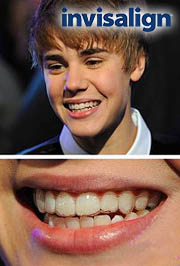
Odontopediatrics
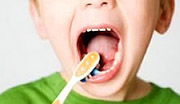
Brånemark offers various treatments especially suited to ensure a healthy growth of the deciduous teeth. This is important because ‘baby teeth’ hold the space where the permanent teeth will erupt. It is recommended to take your child for a first dental visit within six months of the first baby tooth and by no later that the first birthday. This gives the dentist a chance to look for early tooth problems and to talk to you about how to take care for your baby's teeth. It also helps your child feel comfortable at the dentist.
Leer más >>
Educating children accordingly is an important part of prophylaxis. In most cases the success of the treatment is dependent on the patient’s subsequent level of hygiene, so in addition to the treatments, patients are taught how to care for their oral health. Parents should brush pre-scholar’s teeth and supervise the brushing for school age children until they are 7 or 8 years and make sure they are doing a thorough job. Proper brushing removes plaque from the inner, outer and chewing surfaces. When teaching children to brush, place the toothbrush at a 45 degree angle where the gums and teeth meet. Start along the gum line and move the brush in a gentle circular motion several times. Brush the mouth in quarter sections. Finish by brushing the tongue to help freshen the breath and remove bacteria.
DENTAL SEALANTS
Dental sealants, along with fluoridation, are another preventive approach used against tooth decay. Sealants are applied to chewing surfaces of the back teeth (pre-molars and molars). The plastic resin bonds into the depressions and grooves (pits and fissures) of the chewing surfaces of the teeth. The sealant acts as a barrier, protecting enamel from plaque and acids. Thorough brushing and flossing helps remove food particles from smooth surfaces of teeth. But toothbrush bristles cannot reach all the way into the depressions and grooves to extract food and plaque. Sealants protect these vulnerable areas by "sealing out" plaque and food.
DENTAL FILLINGS
A dental filling is a restorative material used to restore the function, integrity and morphology of missing tooth structure. The structural loss typically results from caries or external trauma. In some cases, where the tooth is in critical conditions it may be convenient to cover it with a stainless steel crown. A dental filling is usually completed in approximately 30 minutes per tooth.
PULPOTOMY AND PULPECTOMY
Pulpotomy refers to a common endodontic procedure in which dental pulp is removed from the pulp chamber. This procedure is usually done on primary teeth (children’s teeth) by a pediatric dentist. Pulpotomy is necessary in instances where the pulp of a tooth has become infected due to deep decay or a crack within the tooth and the infected areas need to be removed. In pulpotomy all of the coronal pulp tissue is removed from the crown (visible portion of the tooth above the gums) but the pulp tissue in the root canals remain. This is different that pulpectomy in which all of the pulp is removed from both the root canals and crown. Damage to the pulp becomes visible when a pocket of pus forms at the tip of the tooth root (abscess). If left alone the infection in the tooth will spread and cause further damage to the bone around the tooth. This can lead to the loss of teeth The only alternative to pulpotomy is tooth extraction which although initially cheaper requires further implementation of a dental implant or a bridge. Extraction could also cause a shift in the surrounding teeth resulting in crooked teeth and eventually possible teeth loss. It is important to keep in mind that devitalized teeth can change color. The pediatric dentist at Brånemark begins this treatment by injecting local anesthesia and placing a rubber dam for isolation. This is followed by the removal of the caries and the pulp affected. Once this stage is completed, the pulp chamber and crown are filled with a sealant. Finally, the dentist checks occlusion to make sure that the sealant does not obstruct. The dentist also indicates the recommended postoperative care and any medication needed.
DENTAL EXTRACTION
A dental extraction (also referred to as exodontia) is the removal of a tooth from the mouth. Extractions are performed for a wide variety of reasons, including tooth decay that has destroyed enough tooth structure to render the tooth non-restorable. Extractions of impacted or problematic wisdom teeth are routinely performed, as are extractions of some permanent teeth to make space for orthodontic treatment. There are additional reasons for tooth extraction:
- Extra teeth which are blocking other teeth from erupting.
- Severe gum disease which may affect the supporting tissues and bone structures of teeth.
- Teeth in the fracture line
- Fractured teeth
- Prosthetics; teeth detrimental to the fit or appearance of dentures
- Insufficient space for wisdom teeth (impacted third molars). Although many dentists remove asymptomatic impacted third molars, Health Authorities recommend against this routine procedure, unless there are evidences for disease in the impacted tooth or the near environment resulting from unnecessary extractions.
- Cosmetic; teeth of poor appearance, unsuitable for restoration
- Receiving radiation to the head and neck may require extraction of teeth in the field of radiation.
- Deliberate, medically unnecessary, extraction as a particularly dreadful form of physical torture.
- It was once a common practice to remove the front teeth of institutionalized psychiatric patients who had a history of biting.
FLUORIDATION
Another preventive treatment recommended by Brånemark is dental fluoridation. Fluoridation is the delivery of fluoride to the teeth topically or systemically in order to prevent tooth decay (dental caries) which results in cavities. Most commonly, fluoride is applied topically to the teeth using gels, varnishes, toothpaste/dentifrices or mouth rinse. Systemic delivery involves fluoride supplementation using water, salt, tablets or drops which are swallowed.

